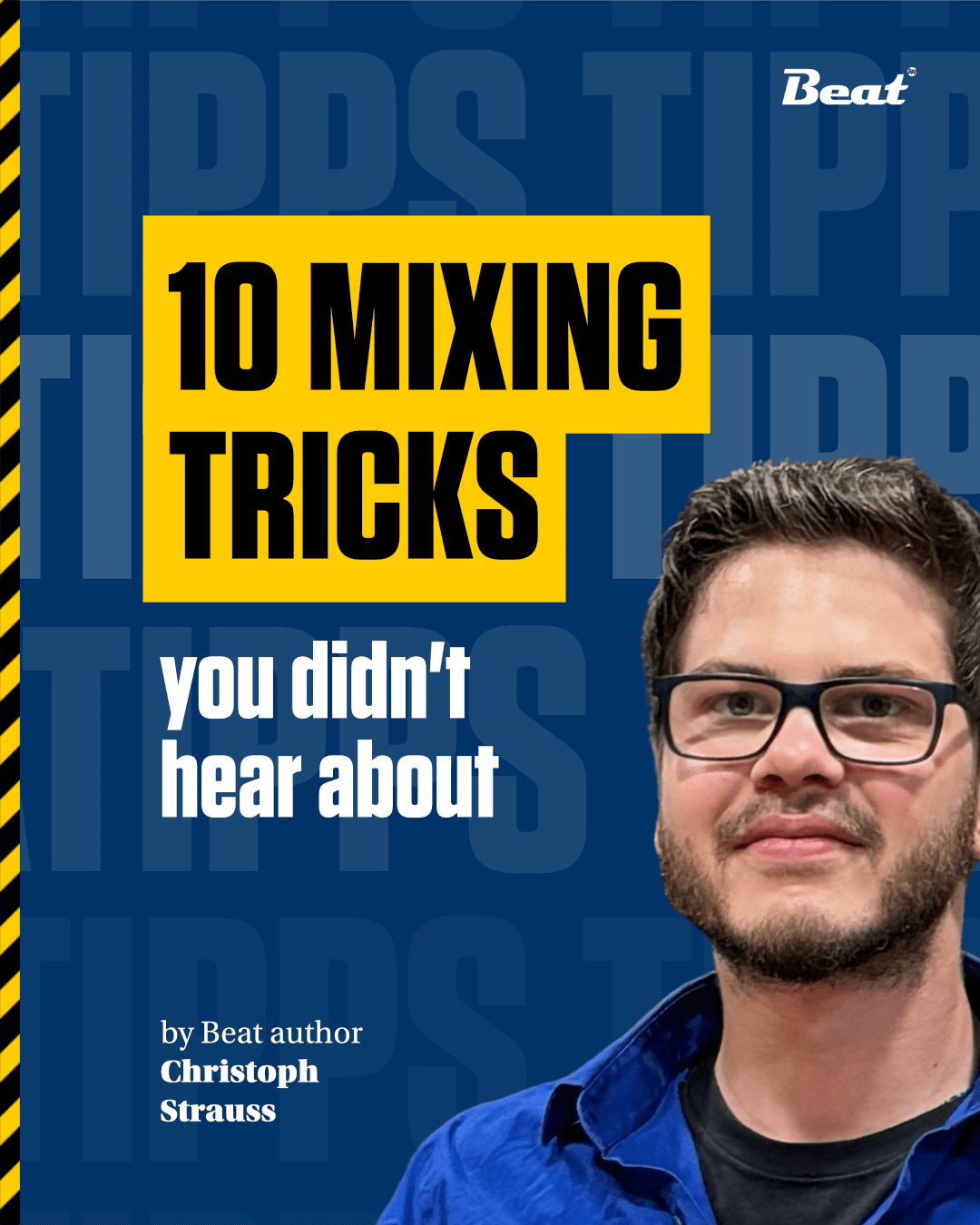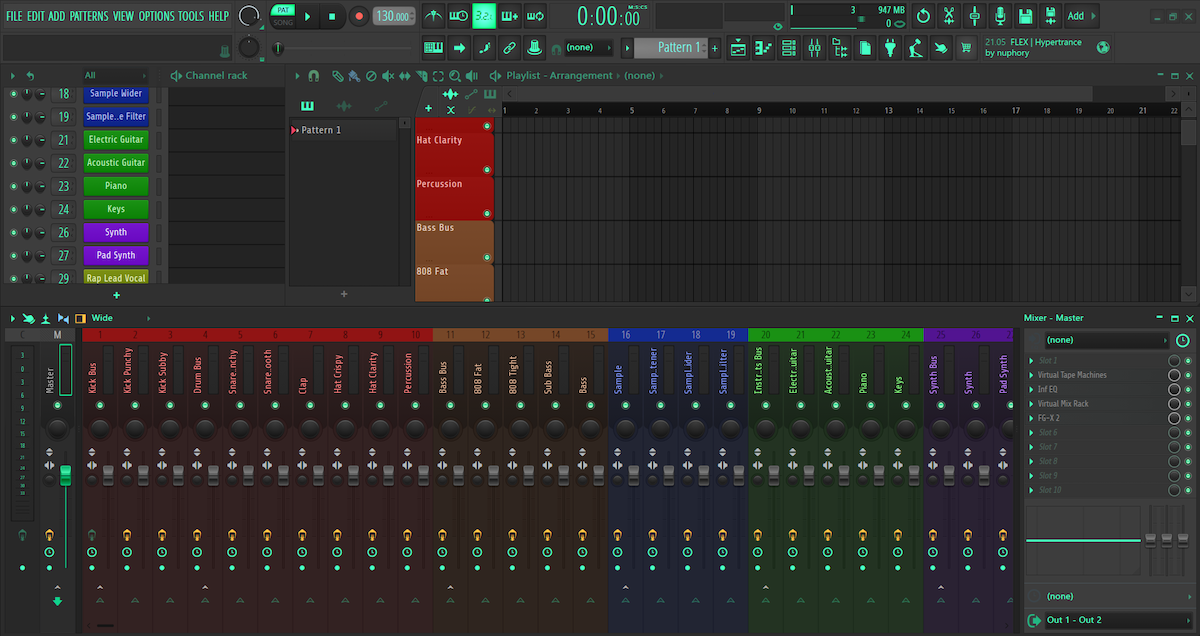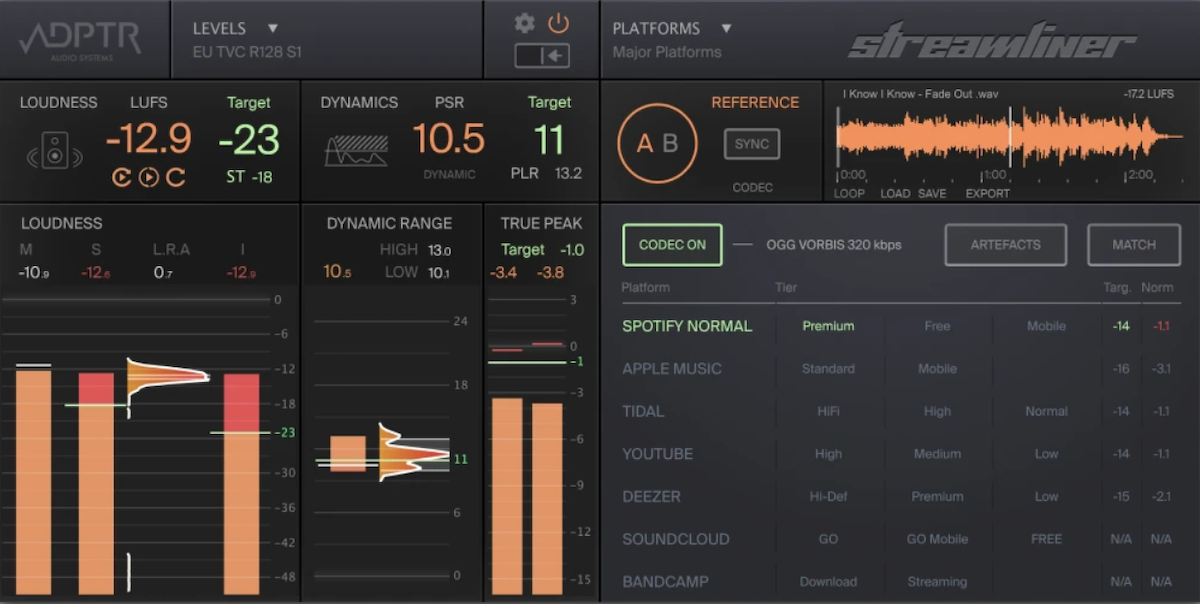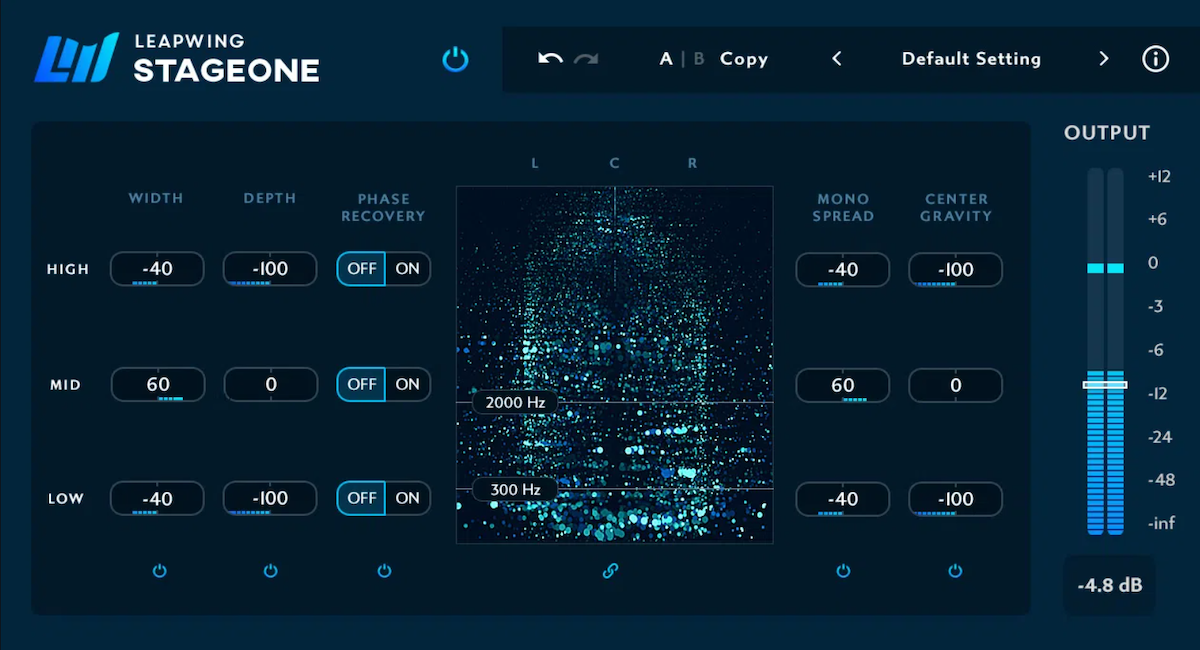10 secret mixing tricks you did not hear about before

Secret 1: Organisation
To keep track of your projects, it‘s worth establishing a fixed structure and naming convention. Ultimately, this structure reflects your workflow. For example, if you build a beat and then export your tracks for mixing and mastering, you can set up your folder structure in exactly the same way. Create the project name, including the key and BPM, as the parent folder - this is also recommended for naming the session - and subfolders for the composition and mix master. Then create another one for the exports, in which you store your masters. The audio files themselves should also follow a fixed naming convention, for example, „Instrument_Project Name_BPM_Key.“ Once you‘ve internalized your system, you‘ll always be able to keep track of things and quickly find specific files.
Secret 2: Templates
A structured approach not only helps with file management, but also with maintaining an overview within a session. Build raw sessions and save them as templates. Specific templates for individual work steps are also recommended here. They should include everything you use by default. This includes color-coding your tracks and plugins. For example, you can load your favorite synths as a template for compositions, so you‘ll have them immediately at your fingertips. For mixing, for example, you can create buses, route them, and equip them with your preferred tools; one application for this would be parallel compression for drums. Here, too, once you‘ve internalized this, you‘ll always have an overview and save time.
Extra tip: The magazine downloads include four templates for various applications, which you can modify if necessary and adapt to your workflow.

Secret 3: Extending sustain with reverb
Reverbs can do much more than just create a room sound – for example, they can naturally extend the sustain of an instrument. This can be helpful in live recordings or samples, among other things. By using reverb selectively, you can make the sound seem longer. Experiment with the pre-delay and decay. Short to medium values are recommended as a starting point. You can also experiment with sidechaining for this. You should also limit the reverb with EQ. Using low- and high-cut filters, find a frequency range that is similar to the original signal and adjust the mix so that it sounds like a naturally sustained note.
Secret 4: Maintain dynamic range
Depending on the genre, there are different guidelines regarding a track‘s dynamic range. It‘s best to analyze a few current tracks using tools like Youlean‘s Loudness Meter, Process Audio‘s Decibel, Signum Audio‘s Bute Loudness Analyzer, or other suitable options. Knowing these values is recommended because, on the one hand, they contribute to the competitiveness of your song and, on the other hand, are part of the sonic character of this genre.
Secret 5: Manual compression
Instead of controlling dynamics with compressors, you can also compress manually. This may sound strange, but it‘s actually volume automation. The advantage of this method is that you can react more flexibly because you‘re not dependent on fixed attack and release times. This allows you to make targeted adjustments and you‘ll find that a compressor with a gentle ratio (for example, 2:1) is sufficient to round out the sound.

Secret 6: Prioritize emotions
It‘s easy to get too caught up in the technical aspects of mixing and mastering. A little EQ here, a little compression there, and before you know it, you have a technically flawless song that sounds flat and emotionless. Therefore, it‘s important to continually shift your perspective and absorb the emotions and energies. Pay attention to which elements are in focus at which time, and what feelings they trigger. Try to identify and preserve these impressions, perhaps even amplify them. Take frequent listening breaks and, if necessary, get a second opinion if you feel stuck on an element.
Secret 7: The core elements as a foundation
Everyone has their own workflow when it comes to approaching and structuring a mix. Many start with the drums and build from there. While they form the rhythmic backbone in most genres, they aren‘t necessarily always the core element. The latter can also be keys or vocals. Try laying a foundation of keys and vocals first, and then building drums, bass, and other instruments around them. This approach gives the main elements more space in the mix and allows you to fit subordinate sounds in so they don‘t clash.
Secret 8: Focus despite width
There are various ways to make sounds wider: doubling and panning, modulation, imagers, and so on. However, these methods often have the disadvantage of losing focus on the sound source, and the sounds may even sound diffuse and out of phase. To counteract this, you can process only one layer of layered sounds with an imager. The others remain as they are. This makes the sound appear wide and enveloping without losing energy and losing the listener‘s focus.

Secret 9: Try new things
Even if you‘ve already developed a mixing routine and built a corresponding template, it‘s important to occasionally step outside the box and try something new. The idea is simply to gain experience and, ideally, complement your existing workflow. As a starting point, you can try top-down mixing, noise mixing, and blind mixing. With top-down mixing, you proceed in reverse, working from the mix bus to the individual signals. With noise mixing, you create a pink noise with a level of -10 dBFS. You then boost each signal until you can hear it through the noise floor and then reduce it again until you just barely hear it. The result should be a balanced mix. With blind mixing, you try to turn off all visual indicators and rely solely on your hearing – sounds logical, but it‘s not that easy, especially in the digital domain.
Secret 10: Consistent monitoring volume
To objectively assess a mix, it‘s important to set a monitoring volume - this applies to both monitors and headphones. Only when the volume remains constant can you make comparisons with references. Furthermore, you‘ll automatically adjust the levels of your tracks appropriately during mixing and, ideally, enter mastering with a mix that leaves 5-7 dB of headroom. The monitoring volume should be set so that you can work with it comfortably even over long periods of time; neither too loud nor too quiet. Set appropriate markers on your interface and/or monitor controller, or take a photo of the settings as a backup.
Want more? Get more!



Subscribe to the digital edition of BEAT Magazine via Plugins-Samples.com and get more gear, in-depth workshops, reviews and 11 GB exclusive plugins and new sounds with every monthly issue!
Subscribe to Beat Magazine for only 4.99€ per month
